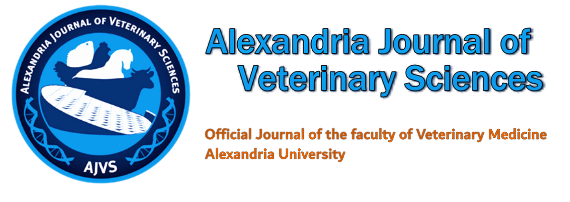
| Original Article Online Published: 10 Apr 2022 | ||||||||||||||||||||||||||||||
AJVS. 2022; 73(1): 36-51 doi: 10.5455/ajvs.98498 Black Fungi in Arabian Horses: Scanning Electron Microscopy Study of Cutaneous Equine Mucormycosis Caused by Mucor indicus for the First Time in Eastern Province, Saudi Arabia Mohammad S. Shathele Abdullah.
| ||||||||||||||||||||||||||||||
| How to Cite this Article |
| Pubmed Style Mohammad S. Shathele Abdullah. Black Fungi in Arabian Horses: Scanning Electron Microscopy Study of Cutaneous Equine Mucormycosis Caused by Mucor indicus for the First Time in Eastern Province, Saudi Arabia. AJVS. 2022; 73(1): 36-51. doi:10.5455/ajvs.98498 Web Style Mohammad S. Shathele Abdullah. Black Fungi in Arabian Horses: Scanning Electron Microscopy Study of Cutaneous Equine Mucormycosis Caused by Mucor indicus for the First Time in Eastern Province, Saudi Arabia. https://www.alexjvs.com/?mno=98498 [Access: May 06, 2025]. doi:10.5455/ajvs.98498 AMA (American Medical Association) Style Mohammad S. Shathele Abdullah. Black Fungi in Arabian Horses: Scanning Electron Microscopy Study of Cutaneous Equine Mucormycosis Caused by Mucor indicus for the First Time in Eastern Province, Saudi Arabia. AJVS. 2022; 73(1): 36-51. doi:10.5455/ajvs.98498 Vancouver/ICMJE Style Mohammad S. Shathele Abdullah. Black Fungi in Arabian Horses: Scanning Electron Microscopy Study of Cutaneous Equine Mucormycosis Caused by Mucor indicus for the First Time in Eastern Province, Saudi Arabia. AJVS. (2022), [cited May 06, 2025]; 73(1): 36-51. doi:10.5455/ajvs.98498 Harvard Style Mohammad S. Shathele Abdullah (2022) Black Fungi in Arabian Horses: Scanning Electron Microscopy Study of Cutaneous Equine Mucormycosis Caused by Mucor indicus for the First Time in Eastern Province, Saudi Arabia. AJVS, 73 (1), 36-51. doi:10.5455/ajvs.98498 Turabian Style Mohammad S. Shathele Abdullah. 2022. Black Fungi in Arabian Horses: Scanning Electron Microscopy Study of Cutaneous Equine Mucormycosis Caused by Mucor indicus for the First Time in Eastern Province, Saudi Arabia. Alexandria Journal of Veterinary Sciences, 73 (1), 36-51. doi:10.5455/ajvs.98498 Chicago Style Mohammad S. Shathele Abdullah. "Black Fungi in Arabian Horses: Scanning Electron Microscopy Study of Cutaneous Equine Mucormycosis Caused by Mucor indicus for the First Time in Eastern Province, Saudi Arabia." Alexandria Journal of Veterinary Sciences 73 (2022), 36-51. doi:10.5455/ajvs.98498 MLA (The Modern Language Association) Style Mohammad S. Shathele Abdullah. "Black Fungi in Arabian Horses: Scanning Electron Microscopy Study of Cutaneous Equine Mucormycosis Caused by Mucor indicus for the First Time in Eastern Province, Saudi Arabia." Alexandria Journal of Veterinary Sciences 73.1 (2022), 36-51. Print. doi:10.5455/ajvs.98498 APA (American Psychological Association) Style Mohammad S. Shathele Abdullah (2022) Black Fungi in Arabian Horses: Scanning Electron Microscopy Study of Cutaneous Equine Mucormycosis Caused by Mucor indicus for the First Time in Eastern Province, Saudi Arabia. Alexandria Journal of Veterinary Sciences, 73 (1), 36-51. doi:10.5455/ajvs.98498 |








